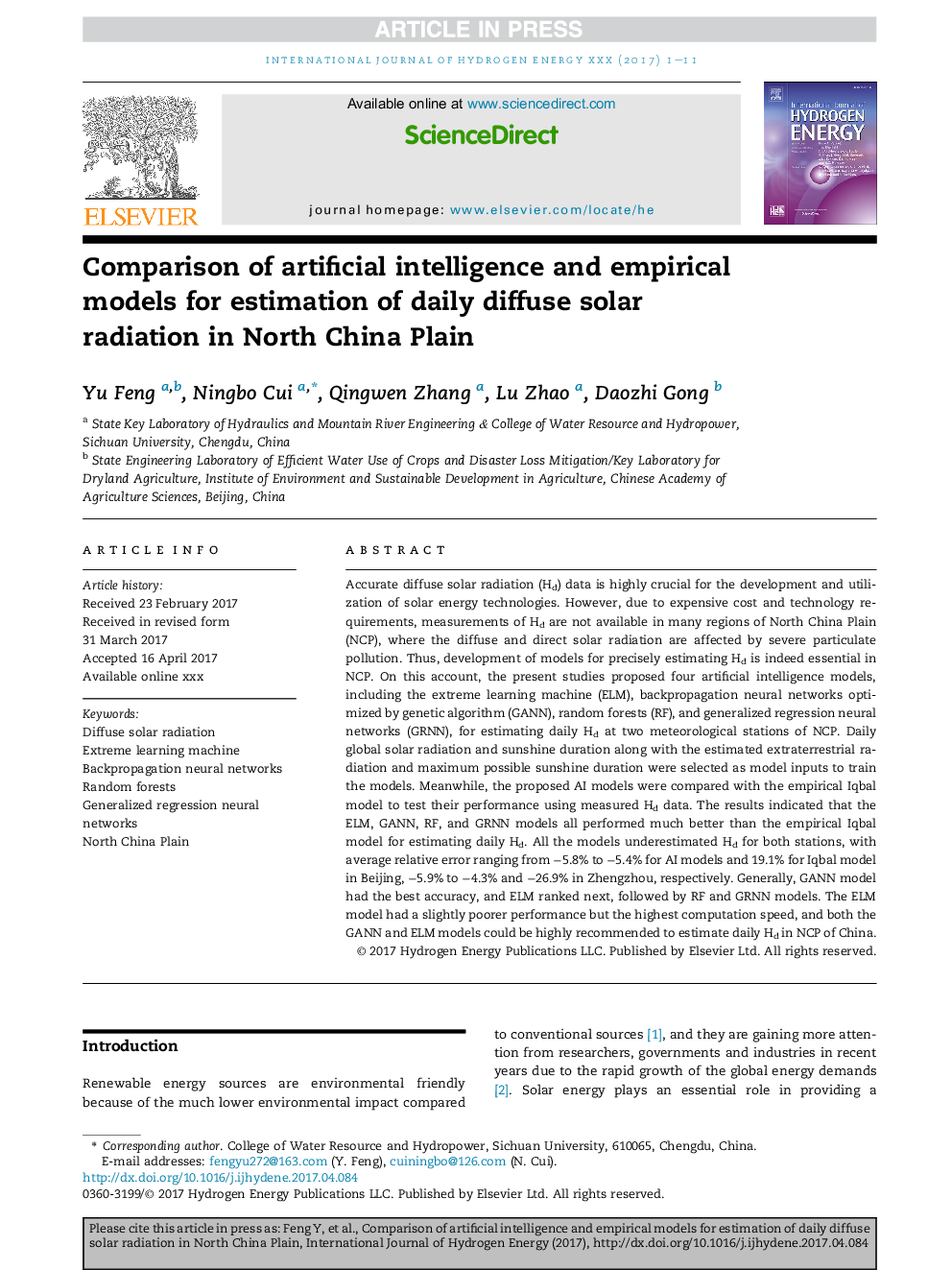| Article ID | Journal | Published Year | Pages | File Type |
|---|---|---|---|---|
| 5145574 | International Journal of Hydrogen Energy | 2017 | 11 Pages |
Abstract
Accurate diffuse solar radiation (Hd) data is highly crucial for the development and utilization of solar energy technologies. However, due to expensive cost and technology requirements, measurements of Hd are not available in many regions of North China Plain (NCP), where the diffuse and direct solar radiation are affected by severe particulate pollution. Thus, development of models for precisely estimating Hd is indeed essential in NCP. On this account, the present studies proposed four artificial intelligence models, including the extreme learning machine (ELM), backpropagation neural networks optimized by genetic algorithm (GANN), random forests (RF), and generalized regression neural networks (GRNN), for estimating daily Hd at two meteorological stations of NCP. Daily global solar radiation and sunshine duration along with the estimated extraterrestrial radiation and maximum possible sunshine duration were selected as model inputs to train the models. Meanwhile, the proposed AI models were compared with the empirical Iqbal model to test their performance using measured Hd data. The results indicated that the ELM, GANN, RF, and GRNN models all performed much better than the empirical Iqbal model for estimating daily Hd. All the models underestimated Hd for both stations, with average relative error ranging from â5.8% to â5.4% for AI models and 19.1% for Iqbal model in Beijing, â5.9% to â4.3% and â26.9% in Zhengzhou, respectively. Generally, GANN model had the best accuracy, and ELM ranked next, followed by RF and GRNN models. The ELM model had a slightly poorer performance but the highest computation speed, and both the GANN and ELM models could be highly recommended to estimate daily Hd in NCP of China.
Keywords
Related Topics
Physical Sciences and Engineering
Chemistry
Electrochemistry
Authors
Yu Feng, Ningbo Cui, Qingwen Zhang, Lu Zhao, Daozhi Gong,
